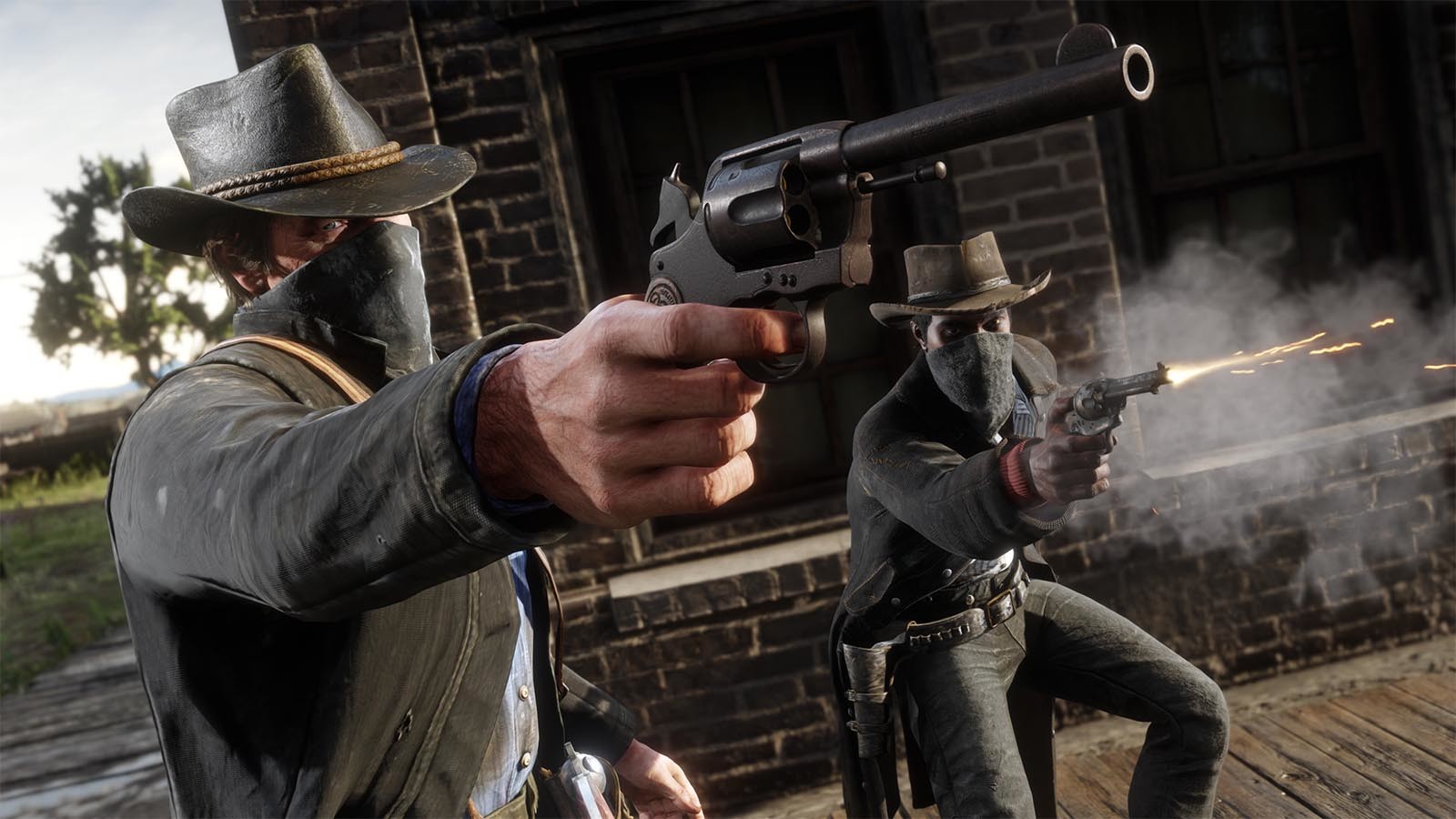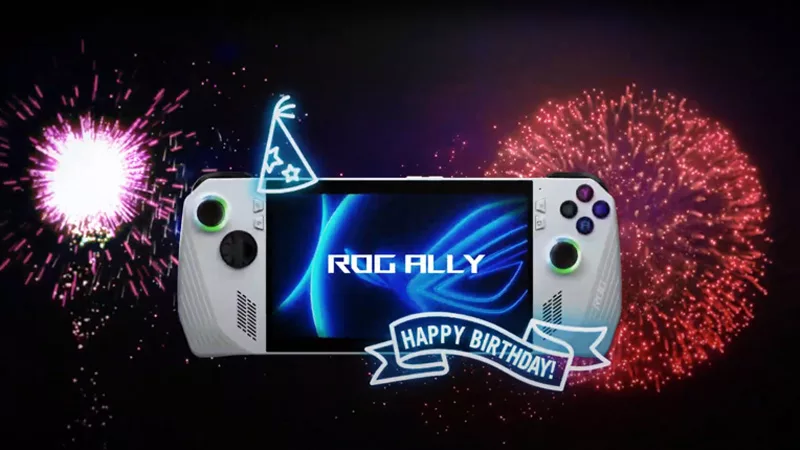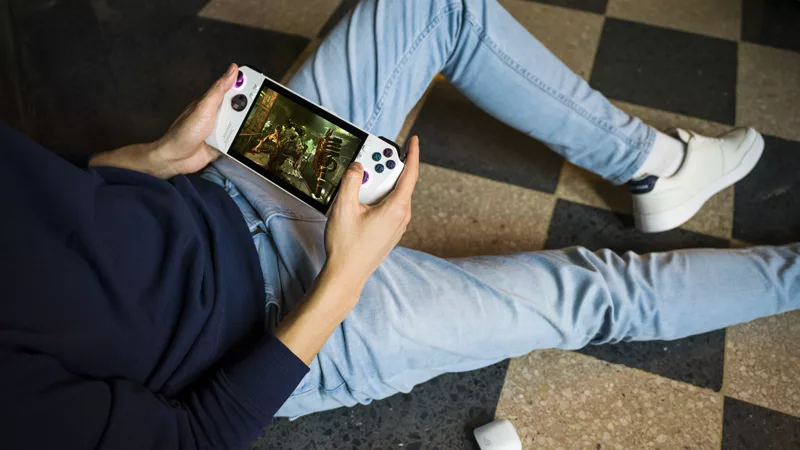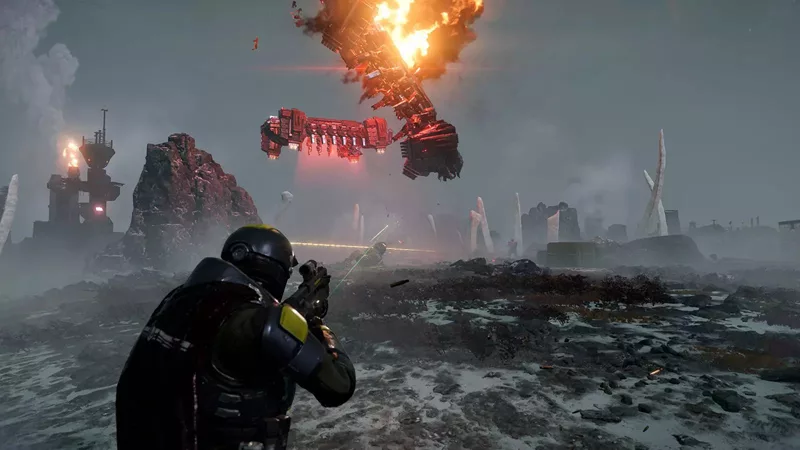Red Dead Redemption 2 on the ROG Ally: performance guide & best settings
 Image source: Gamesplanet
Image source: Gamesplanet
Red Dead Redemption 2 is still one of the most gorgeous open worlds you can explore in a game today. And with the right settings, the ROG Ally can handle it with aplomb, giving you smooth gameplay on-the-go. Here's the config we recommend.
This is part of our ultimate guide to the ROG Ally series of articles. For more great games, check out our recommendations here.
What framerate to expect in Red Dead Redemption 2 on the ROG Ally
Turning down the right settings in Red Dead Redemption 2 can get you a lot of extra performance, while retaining excellent visual quality. We tested RDR2 at 1080p in Turbo Mode on the Ryzen Z1 Extreme-equipped Ally, and while it’s a tough game to run, you have a lot of options for customizing performance.
With the lowest possible graphics settings, you can expect performance to hover around 40-50 FPS at 1080p with no anti-aliasing or graphics scaling — with FSR set to Quality you can boost that a bit higher, around 45-55 FPS. Unfortunately, you miss out on some pretty crucial graphical flourishes that give the world realism with minimum settings, so we put together an optimized configuration that boosts the image quality in a few noticeable ways while leaving less noticeable or more costly settings on Low.
With the optimized settings below and FSR set to Quality, you can expect similar performance with a better-looking image — about 40-50 FPS, which thanks to the Ally’s FreeSync Premium display feels butter smooth. You can adjust FSR to Balanced if you want to make things even smoother, and you’ll see slightly higher framerates than that when plugged in to the wall as well. Note, of course, that your performance can also vary depending on drivers, software, and other factors as well — including whether you’re playing online.
Red Dead Redemption 2 optimized graphics settings for the ROG Ally
Red Dead 2 can still look pretty good on Low settings, but with the right tweaks, you can raise image quality significantly without tanking performance. Here are our optimized settings for the ROG Ally:
- Resolution: 1920x1080, the native resolution of the ROG Ally’s display.
- Texture Quality: Ultra. Ultra textures look noticeably better than lower settings, and the Ally has enough VRAM to handle it.
- Anisotropic Filtering: X8. This affects how textures look at an angle, and X8 provides great quality without hampering performance too much.
- Lighting Quality: Low. Higher settings add more realistic lighting, but greatly impact performance, so we’re going with Medium as it provides better framerates while still looks quite excellent.
- Global Illumination Quality: Low. This setting has a smaller effect on indirect lighting sources and the way it bounces off other objects, so Low provides a nice little performance boost for little visual change.
- Shadow Quality: Medium. Shadows affect both performance and visuals pretty heavily, so to strike a balance, I think it’s best to put this at Medium. High does look noticeably better, though, if you’re willing to give up a couple frames per second.
- Far Shadow Quality: Low. This affects shadows in the distance, which are hard to notice on a handheld screen. Set this to Low for a performance boost.
- Screen Space Ambient Occlusion: Medium. This adds extra shadows to areas where objects meet other objects in the world, which makes things look much more realistic. Medium looks almost the same as Ultra but for much better performance.
- Reflection Quality: Low. This sets the resolution of reflections in windows and other glossy surfaces. Low will get you back quite a bit of performance.
- Mirror Quality: Low. This only affects the resolution of reflections in actual mirrors. It's pretty rare, and you could set it to High if you wanted, but to keep performance stable I’m going to set this to Low.
- Water Quality: Low. Water reflections and physics are not super noticeable, especially on the Ally’s handheld screen, so set this to Low and enjoy the free performance.
- Volumetrics Quality: Low. This determines the resolution of volumetric effects like fog and certain light sources. Low still looks good while providing much better performance than higher settings.
- Particle Quality: Medium. This affects the number and quality of particle effects like snow. Medium is a good balanced choice here.
- Tessellation Quality: Medium. Tessellation makes certain surfaces look more three-dimensional, which adds a noticeable improvement to visuals. Set this to at least Medium.
- AMD FSR 2.0: Quality. FidelityFX Super Resolution, or FSR, renders the game at a lower resolution, then scales it up using a temporal algorithm that looks quite good, especially on the Ally’s handheld screen. It not only provides better performance, but smooths out jagged edges and cuts down on shimmering that’s present at 1080p without anti-aliasing. Set this to Quality and adjust FSR 2.0 Sharpening to taste.
- TAA, FXAA, and MSAA: Off. If you set FSR on, these will be turned off and greyed out. If you don’t want to use FSR for some reason, you can turn on TAA and FXAA to smooth out edges somewhat, though they’ll cost even more performance.
- Advanced Settings: Unlocked. Turn these on for a bit more control over the following settings.
- Graphics API: DirectX 12. In the past, DirectX 12 and Vulkan have both had their own advantages and disadvantages in Red Dead Redemption 2 (one might be higher framerate with lower dips, or vice versa). In my tests on the Ally, both performed about the same, so I stuck with DirectX 12 — but try both to see which provides the better experience for you.
- Near Volumetric Resolution, Far Volumetric Resolution, and Volumetric Lighting Quality: Low. These settings inherit the Volumetrics Quality setting from above, so no need to change them.
- Unlocked Volumetric Raymarch Resolution: Off. This primarily affects the resolution of clouds, which is hard to notice on the Ally’s handheld screen, so turn this off for better performance.
- Particle Lighting Quality: Medium. This determines the detail in textures used for particle lighting, so keeping this to Medium can help visual quality in those scenarios.
- Soft Shadows: High. This offers the same performance as Medium, so there's no reason not to go with High.
- Grass Shadows: Low. These small shadows cast by grass are less noticeable in terms of quality, so set this to Low — you’ll still get shadows, but you’ll get some performance back too.
- Long Shadows: Off. This enables long shadows during sunrise and sunset, which can look nice, but will affect performance. Leave this off.
- Full Resolution Screen Space Ambient Occlusion: Off. This is hardly noticeable in terms of quality, but can drop performance, so leave it off.
- Water Refraction Quality, Water Reflection Quality, and Water Physics Quality: Low. These settings inherit the Water Quality setting from above, so no need to change them.
- Resolution Scale: Off. FSR 2.0 is a better option for scaling resolution.
- TAA Sharpening: Off. If you’re using TAA, you can set this to taste, otherwise, use FSR’s sharpening filter.
- Motion Blur: Set to taste. This will add blur to movement, which is mostly personal preference — though most gamers prefer this off.
- Reflection MSAA: Off. This adds anti-aliasing to reflections, which is not worth the performance cost when we’ve already set those low.
- Geometry Level of Detail: 10/10. The difference between maximum and minimum doesn’t seem to be huge in terms of performance, so crank up the view distance and live your best life.
- Grass Level of Detail: 2/10. This affects the draw distance of grass, but on the Ally’s handheld screen, you can easily set this lower and gain some performance without noticing.
- Tree Quality: High. This sets the draw distance of trees, which is a bit more noticeable than grass, but not by much. However, it also doesn’t affect performance as heavily, so set this to High and enjoy your trees.
- Parallax Occlusion Mapping Quality: Medium. This gives certain textures, like the ground, more shading and detail. Medium looks noticeably better than Low.
- Decal Quality: Low. It’s very hard to tell the difference between the low and high settings here, as it affects decals like bullet holes. We’ll take whatever performance we can get, so set this to Low.
- Fur Quality: Medium. There are only two options here, and while High looks excellent, it’s too big of a performance cost for our scenario. Stick with Medium.
- Tree Tessellation: Off. This adds more depth and detail to tree trunks, which is nice, but can hit performance hard in some scenarios.
Whew! That’s a lot of settings, but trust me, the final product is worth it. The image quality is solid, and you’ll spend most of your time enjoying framerates in the 40s for a smooth ride through the Wild West. Of course, feel free to use this as a starting point to tweak your own settings to match your individual preferences. Red Dead Redemption 2 offers plenty of options for you to fully customize the experience, and that’s what gaming on Windows is all about.


